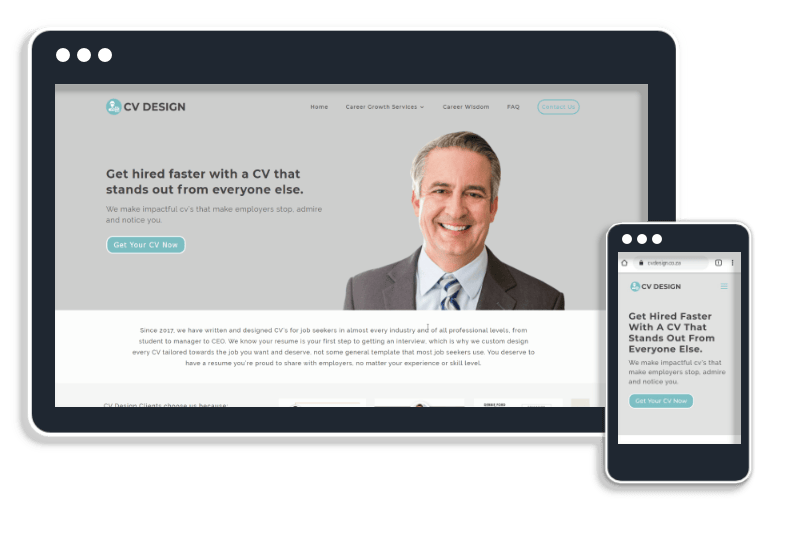Budget-friendly Options for Top Quality Web Design Pretoria for Startups
Budget-friendly Options for Top Quality Web Design Pretoria for Startups
Blog Article
Best Practices for Creating User-Friendly Website Design
In the ever-evolving landscape of internet design, establishing an easy to use user interface is vital for engaging audiences and driving conversions. As we discover these foundational principles, it becomes clear that effective user experience style not just meets customer assumptions however additionally establishes the phase for much deeper interaction.
Simplify Navigating
A structured navigating system is crucial for enhancing customer experience on any type of web site. Efficient navigation enables users to locate the info they seek quickly and effortlessly, consequently minimizing frustration and increasing the likelihood of engagement. A clear design that classifies material logically is extremely important; individuals ought to without effort recognize where to click for specific details.
Utilizing a basic high-level navigation bar, matched by drop-down menus for subcategories, help in maintaining an arranged structure. It is vital to restrict the number of main navigating web links to avoid frustrating users; commonly, five to 7 options are optimal. In addition, utilizing descriptive labels boosts quality, allowing customers to discern the web content of each area at a look.
Integrating a search feature further improves the navigating experience, particularly for content-rich websites. This attribute encourages individuals to bypass conventional navigating paths when looking for particular information. Furthermore, regular design components across all pages strengthen knowledge, enabling individuals to browse with self-confidence.
Optimize for Mobile

To start with, adopt a receptive layout technique that immediately readjusts the layout and content based on the screen size. This versatility makes certain that individuals have a consistent experience throughout gadgets. Next off, focus on touch-friendly user interfaces by making certain switches and web links are conveniently clickable, lessening the need for zooming.
In addition, think about the value of concise material discussion. Mobile customers commonly look for quick details, so utilizing strategies like retractable food selections or accordions can improve usability without overwhelming the user. Furthermore, make certain that typefaces are clear, and picture dimensions are enhanced for faster loading.
Finally, test your internet site on various smart phones and running systems to recognize prospective problems. By attending to these elements, you will create an intuitive mobile experience that keeps customers engaged and motivates them to explore your offerings further - Web Design Pretoria. Focusing on mobile optimization is important for achieving an easy to use internet layout in a progressively mobile-centric globe
Enhance Loading Speed
Loading rate is a vital aspect that can dramatically affect user complete satisfaction and engagement on a site. Research studies show that customers expect pages to pack in two secs or less; beyond this limit, the possibility of desertion raises substantially. Enhancing filling speed is important for keeping visitors and enhancing overall website efficiency.
To enhance loading rate, several best techniques must be carried out. First, maximize pictures by pressing them without giving up quality, which can significantly reduce documents sizes. Furthermore, take advantage of internet browser caching to store copies of files in your area, making it possible for faster lots times for returning site visitors. Minifying CSS, JavaScript, and HTML documents can additionally help by removing unneeded characters and areas, consequently decreasing the amount of code that requires to be refined.

Use Regular Style Components
Developing a natural aesthetic identity is crucial for improving user experience on a web site. Consistent layout elements, including color design, typography, switches, and design structures, create a unified appearance that helps individuals navigate easily. When customers encounter familiar patterns and designs, their cognitive lots is decreased, allowing them to concentrate on content as opposed to deciphering varying layout aspects.
Using a standard color combination strengthens brand name recognition and cultivates a psychological connection with users. Recommended Reading Keeping constant typography-- such as font designs, dimensions, and weights-- guarantees readability and adds to a refined appearance. Furthermore, consistent switch styles and interactive aspects guide users without effort with the website, enhancing functionality.
Moreover, a natural format helps establish an arranged flow of info, making it much easier for customers to absorb and locate material. Each see this page web page ought to reflect the exact same style principles to stop complication and disorientation.
Prioritize Availability
A natural visual identity not just improves navigating yet additionally sets the stage for prioritizing accessibility in website design. Access ensures that all individuals, including those with handicaps, can navigate and communicate with a web site properly. To attain this, web designers should follow developed guidelines, such as the Web Material Access Guidelines (WCAG)
Applying attributes like alt message for images, key-board navigability, and ideal shade comparison can significantly improve the user experience for individuals with aesthetic, acoustic, or cognitive disabilities. It is important to use semantic HTML to structure content logically, permitting assistive innovations to share and translate details accurately to individuals.
Additionally, providing several means of interaction-- such as message options for audio and visual content-- can deal with diverse individual requirements. Normal functionality screening with participants that have disabilities can uncover prospective barriers that may not be promptly evident during the design stage.
Eventually, focusing on availability not just abides by lawful criteria but additionally widens the potential target market, fosters inclusivity, and boosts general site usability (Web Design Pretoria). By embedding accessibility into the style process, programmers can create a more equitable digital landscape for everyone
Final Thought

As we explore these foundational principles, it becomes clear that effective user experience layout not only fulfills user expectations yet also establishes the stage for deeper involvement. Mobile users frequently seek fast details, so using methods like retractable food selections or accordions can boost functionality without overwhelming the customer. When users come across acquainted patterns and styles, their cognitive load is reduced, permitting them to focus on content instead than understanding varying design aspects.
In recap, executing finest practices for easy to use internet style dramatically improves the general individual experience. Adhering to these guidelines cultivates a favorable partnership between customers and digital systems, inevitably promoting user fulfillment and retention.
Report this page